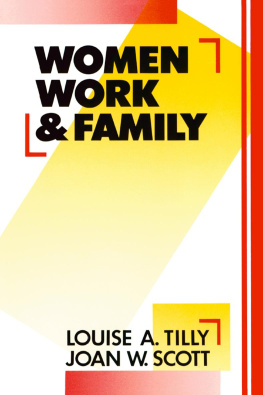SOCIAL MOVEMENTS, 17682008
SOCIAL MOVEMENTS, 17682008
Charles Tilly and Lesley J. Wood
First published 2009 by Paradigm Publishers
Published 2017 by Routledge
2 Park Square, Milton Park, Abingdon, Oxon OX14 4RN
711 Third Avenue, New York, NY 10017, USA
Routledge is an imprint of the Taylor & Francis Group, an informa business
Copyright 2009 Taylor & Francis.
All rights reserved. No part of this book may be reprinted or reproduced or utilised in any form or by any electronic, mechanical, or other means, now known or hereafter invented, including photocopying and recording, or in any information storage or retrieval system, without permission in writing from the publishers.
Notice:
Product or corporate names may be trademarks or registered trademarks, and are used only for identification and explanation without intent to infringe.
Library of Congress Cataloging-in-Publication Data
Tilly, Charles.
Social movements, 17682008 / Charles Tilly and Lesley J. Wood.
p. cm.
Rev. ed. of: Social movements, 17682004 / Charles Tilly.
Includes bibliographical references and index.
ISBN 978-1-59451-610-8 (hardcover : alk. paper)
ISBN 978-1-59451-611-5 (pbk. : alk. paper)
1. Social movements. I. Wood, Lesley J. II. Tilly, Charles. Social movements, 17682004. III. Title.
HM881.T55 2009
303.484dc22
2008039379
Designed and Typeset by Straight Creek Bookmakers.
ISBN 13: 978-1-59451-611-5 (pbk)
To Chuck, who gave us so much
CONTENTS
In June 2003, when the good people at New York Presbyterian Hospital began what an optimistic view projected as four or five months of chemotherapy and related treatments for lymphoma, they faced me with an interesting choice: mope as an invalid or invent a special project that would lend coherence to a difficult interlude. With vivid inspiration from friends who have borne hardship resolutely, the second course looked more attractive. Having long thought that someone else should write the book you see before you, I started writing it to calm my nerves during my first chemotherapy session, with the fantasy of finishing it precisely as the last drop of chemicals entered my veins on the final day of treatment. Like most fantasies, this one did not quite work out. But it did discipline my efforts during months of chemo, and it did lead to the books completion during what we all hope will be the treatments final, successful phase.
Although I did not speak much of contenders before the 1970s, did not explicitly define my subject as contention until the 1980s, and did not start theorizing about contentious politics until the 1990s, for half a century a major stream of my work has concerned how, when, where, and why ordinary people make collective claims on public authorities, other holders of power, competitors, enemies, and objects of popular disapproval. For many years I generally avoided the term social movement because it sponged up so many different meanings and therefore obscured more than it clarified. Preparing detailed catalogs of contentious events for periods from the seventeenth to twentieth centuries in Western Europe and North America changed my mind. The catalogs made clear that major shifts in the array of means by which ordinary people made collective claims on otherstheir contentious repertoiresoccurred in those regions between 1750 and 1850; that despite considerable differences in timing from regime to regime, in each regime the shifts clustered together; and that within the cluster emerged a distinctive combination of campaigns, performances, and displays. Participants and observers alike eventually began calling that new form of politics a movement. Why not pin down that change?
Despite the current tendency to call everything from fads to established interest groups movements, the emergence, transformation, and survival of that new, distinctive political form deserved historical attention. With some trembling about likely turf wars and definitional disputes, I decided to use the standard term social movement instead of inventing some substitute such as full-fledged social movement or the type of social movement that first emerged in Western Europe and North America at the end of the eighteenth century. It certainly simplified the text.
Fortunately for friendship and future collaboration, in the book that most resembles this one with respect to argument and content, my friend and collaborator Sidney Tarrow explicitly disavows undertaking the social movements history (Tarrow 1998: 3). This book therefore picks up where Tarrows splendid survey of social movements leaves off. Social Movements, 17682004 provides a historical survey of social movements from their eighteenth-century origins into the twenty-first century, ending with speculations about possible futures for social movements.
In order to avoid encumbering the text with references to my own previous publications, I have borrowed evidence freely from my earlier work, mostly without citing it. I have adapted a few passages from Stories, Identities, and Political Change (Rowman and Littlefield, 2002), The Politics of Collective Violence (Cambridge University Press, 2003), and Contention and Democracy in Europe, 16502000 (Cambridge University Press, 2004), but at least 95 percent of the text is quite new.
For information, citations, criticism, and editorial advice, I am grateful to Lance Bennett, Vince Boudreau, Pamela Burke, Dana Fisher, Elisabeth Jay Friedman, William Ivey, Vina Lanzona, Daniel Menchik, Vicente Rafael, Sidney Tarrow, Cecelia Walsh-Russo, Lesley Wood, and Viviana Zelizer. I hope they will be pleasantly surprised by what they helped create.
Charles Tilly passed away just before I finished the new edition of this book. Since his death, there has been a flood of Chuck storiesstories of his mentorship, stories of his kindness, and stories of his rigorous and prodigious scholarship. Legions of his past students marveled at his ability to clarify their ideas through asking a few incisive questions. Until his death he didnt stop asking those questions.
As he explained in the preface to the first edition, this book is a short answer to a recurring set of questions. Why do social movements look so similar around the world, and how and why have such movements become a major form of political action globally?
Since the last edition, Tilly wrote incisively and extensively on protest, social organization, and political relationships. The books of the past four years are Contention and Democracy in Europe, 16502000 (2004), Trust and Rule (2005), Identities, Boundaries, and Social Ties (2005), Regimes and Repertoires (2006), Why? (2006), Democracy (2007), Credit and Blame (2008), and Contentious Performances (2008). Working with Sid Tarrow, he also wrote Contentious Politics (2006). I wont begin to list the numerous journal articles, book chapters, and edited volumes. I have tried to incorporate the ideas from these new works into this text where appropriate.
Over the same period, in the larger world of contentious politics weve seen the spread of the social movement to new sites around the globe. In North America, we have seen the emergence of new cycles of protest around immigration, disability, first nations struggles, and human rights more generally. Some movements that were expanding in 2004 are beginning to fragment. These include the global antiwar movement that was mobilizing against the wars in Iraq and Afghanistan and sections of the global justice movement. Globally, indigenous movements and movements around climate change are gaining strength. In Latin America, indigenous movements are gaining control of some nation-states, and others are demanding increased autonomy from the state apparatus. In the same period, prodemocracy movements in Mexico, Burma, Tibet, Pakistan, Zimbabwe, and other sites have become more visible. However, in many of these sites, movement success is not immediately apparent. Ethnic conflict, economic inequalities, and repression continue to constrain the possibilities of public, grassroots mobilizing.










